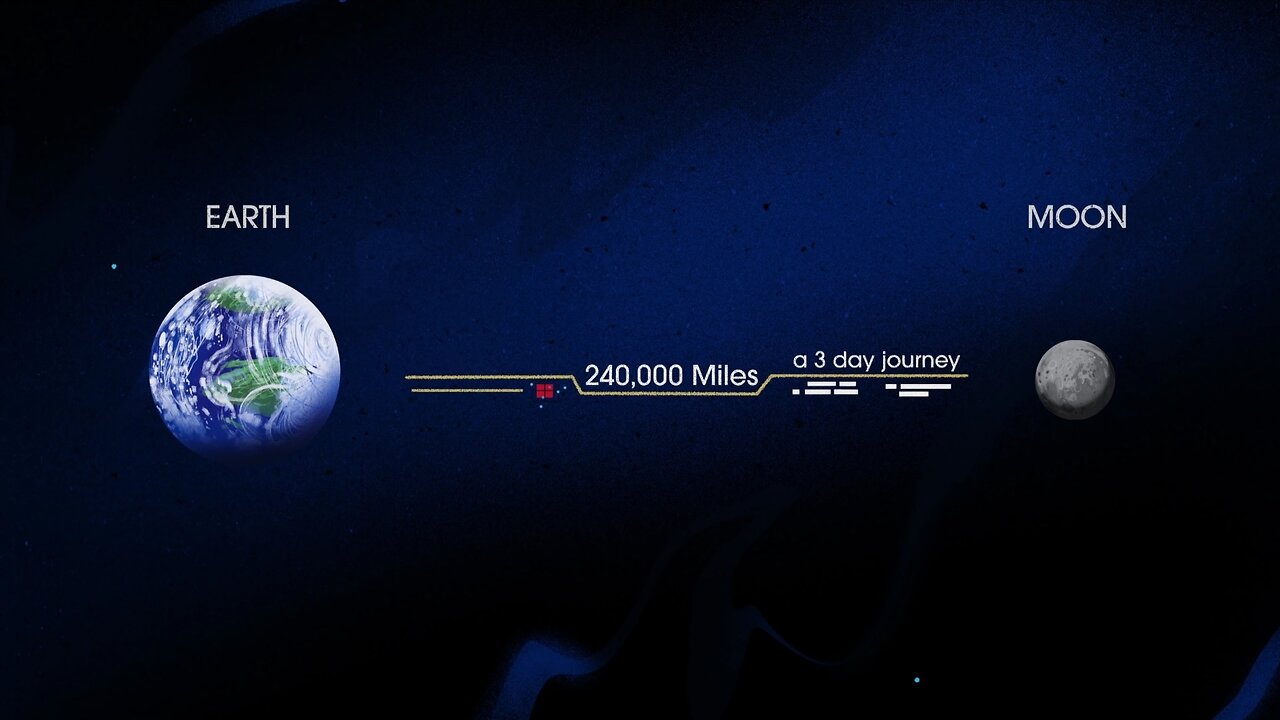Premium Only Content

How We Are Going to the Moon - 4K
Going to the Moon involves a complex process that typically includes the following steps:
1. Mission Planning: Space agencies like NASA plan Moon missions years in advance. They determine mission objectives, select crew members, and design spacecraft.
2. Spacecraft Development: Specialized spacecraft are built for Moon missions. These include lunar landers, crew modules, and rockets. The spacecraft must be engineered to withstand the harsh conditions of space and the Moon.
3. Launch: The spacecraft is launched from Earth using a powerful rocket. It enters Earth's orbit and then begins its journey toward the Moon.
4. Trans-Lunar Injection: The spacecraft's engines are fired to break free from Earth's gravity and set a course for the Moon. This phase is known as trans-lunar injection.
5. Lunar Orbit Insertion: Once near the Moon, the spacecraft enters lunar orbit. This involves slowing down to be captured by the Moon's gravity.
6. Lunar Landing (if applicable): If the mission includes human exploration or robotic landers, the spacecraft descends to the lunar surface. This is a critical and challenging phase, as it requires precise navigation and control.
7. Surface Operations: Astronauts (if present) conduct experiments, collect samples, and perform tasks on the lunar surface. Robotic missions may deploy rovers and scientific instruments.
8. Return to Earth: After completing mission objectives, the spacecraft leaves lunar orbit and begins its journey back to Earth.
9. Re-entry and Landing: The spacecraft re-enters Earth's atmosphere, where friction generates intense heat. Protective shields are used to survive this re-entry. The craft then deploys parachutes (or uses other landing systems) for a safe landing on Earth.
10. Post-Mission Analysis: Data and samples collected during the mission are analyzed to further our understanding of the Moon and space in general.
It's important to note that the specific details of Moon missions may vary depending on the space agency, mission objectives, and the technology available at the time. Additionally, the timeline and procedures may evolve with advancements in space exploration.
-
 LIVE
LIVE
SpartakusLIVE
2 hours agoFriday NITE HYPE
9,966 watching -
 LIVE
LIVE
Nerdrotic
3 hours ago $4.62 earnedLet's TACO-bout Take Us North, Hollywood COPE! Cracker Barrel CRACKED! | Friday Night Tights 369
1,634 watching -
 LIVE
LIVE
Mally_Mouse
22 hours agoFriend Friday!! 🎉 - Let's Play! - Microworks
309 watching -
 LIVE
LIVE
Quite Frankly
2 days agoHookah Special: Found Footage, Workplace Folly, More Cringe Music Vids (8/23/25 Re-Run)
230 watching -

AlaskanBallistics
18 hours agoNutrek Optics Coppertag 5-25x56mm Review
62 -
 LIVE
LIVE
SavageJayGatsby
18 hours agoFriend Friday | MicroWorks | $300 Weekly Goal for Spicy Bite Saturday | 250 Follower Goal!
31 watching -
 LIVE
LIVE
The Mike Schwartz Show
3 hours agoTHE MIKE SCHWARTZ SHOW Evening Edition with Guests Dr. PETER MCCULLOUGH and JOHN LEAKE
4,226 watching -
 1:01:41
1:01:41
BonginoReport
8 hours agoAI & The Woke Indoctrination Ruining Childhood - Nightly Scroll w/ Hayley Caronia (Ep.123)
28.8K11 -
 1:17:29
1:17:29
Kim Iversen
5 hours agoTrotskyite Neocons: How MARXISTS Built the Modern GOP
70.7K89 -
 DVR
DVR
StoneMountain64
4 hours ago#1 Battlefield Mastery Session with the BOYS
10K1